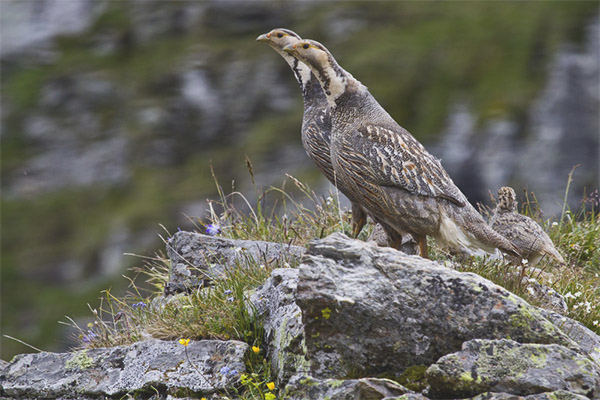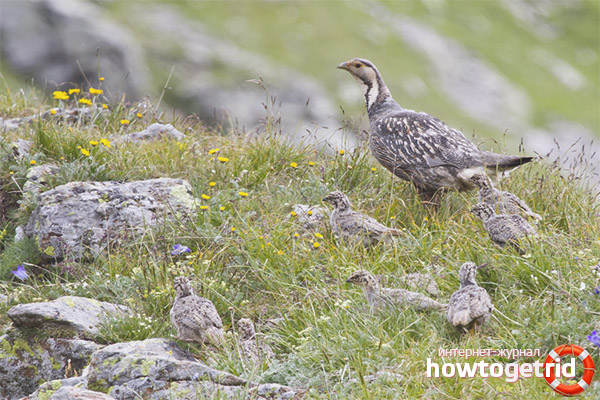The content of the article
Caucasian ular is also called mountain turkey. Far from everyone knows this bird, because its habitat is very limited, and they prefer to settle in inaccessible places. People who are lucky enough to see these birds, not so much. Outwardly, the Caucasian ular is a cross between a partridge and an ordinary domestic chicken. It belongs to the family of pheasants, and is its largest representative.
Description
The plumage of the Caucasian ular is colored in several colors. The main color in their color is gray. On the body there are small bright spots. This coloring helps the mountain turkey to disguise, so that predators find it difficult to see it. Among the rocks, the bird becomes almost invisible. In total, these birds are about 400-700 thousand.
Usually the Caucasian ular weighs less than 2.5 kg.His body is knocked down, his legs are short and rather thickish. The bird's neck is short, and the beak is small. The wings are short, the length of the tail is more than average. This physique makes it easier for the bird to move around the mountainous terrain. The bird walks on the slopes, maintaining balance with the help of wings.
Habitats
Caucasian ular live and move around the area in groups of several individuals. They are most active in the morning. During these hours you can hear how the bird sings beautifully and melodiously. If the ular feels that he is in danger of any danger, he immediately goes to the nearest precipice. From there he plans to disappear. When the snowcoop flies, it makes a whistling sound.
Nutrition
This bird eats only vegetable food.She moves along the slopes in search of leaves, buds, young stalks or seeds. Food for it can be any of the 70 species of plants that grow in this area of the mountains. The main diet of mountain turkey - cereals, legumes, and cloves.
To food frayed, mountain turkey eats small stones. Scientists say that up to 20 g of small stones can be in the stomach of these birds. They are not looking for water, since all the necessary fluid for them enters the body with food.
Breeding
Throughout the winter and during the first half of March, the Caucasian Ular live in packs. But with the onset of the mating season, each individual begins to live independently. Like most other birds, the males of the Caucasian ular attract their darling with beautiful singing. Sometimes a fight may arise between two male rivals. During the mating season, the male usually loses weight.
When the male realizes that he is the winner of this marriage war, he pulls his neck and raises his long tail. When fertilization has occurred, the weight of the male rapidly begins to return to normal.
Mating occurs in the second half of March or in April, after which the nesting period begins. The female itself incubates the eggs. Their quantity usually varies within 5-8 pieces. The male is not involved in this process. The baby bird that is born is growing rapidly. Already at three months of age, he has the size of an adult bird. And the next year they themselves already bring posterity.
Mountain Turkey Hunt
In addition, even experienced hunters find it difficult to catch a mountain turkey. When she screams, it makes it difficult to hunt big game. When a mountain turkey feels in danger, it starts screaming loudly and shrilly. In this way, the bird notifies about the danger of the inhabitants of the mountains. Earlier, curative properties were attributed to the meat of these birds. Today, among some peoples, they are considered a delicacy that everyone wants to try.
Even among those people who constantly live in the Caucasus, there are few who have seen this bird.She always behaves carefully, and settles in places that are inaccessible to man. Those who watched the bird saw it only from afar. She tries not to let a person close to her, because by nature she is very cautious and feels danger in people. If you ever get to the Caucasus, and meet a gray bird with specks resembling a chicken, perhaps this is mountain turkey.
Video: Caucasian ular (Tetraogallus caucasicus)












To send